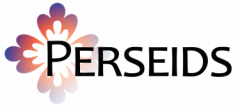Treebanking, and the collaborative environment that surrounds treebanking allows undergraduates to participate in research and scholarship in new ways. This fall I am a teaching assistant, or peer-instructor, for an intermediate Greek course. Although I am a Junior in college, and taking my fifth Greek course right now, but because of treebanking I am able to instruct and assess students with one year less Greek than I have.
My role in the class is to lead close reading sessions and a treebanking lab, and to grade treebanking assignments. In the close reading sections, I go over the readings, drawn from Plato’s Apology, and answer questions. In the treebanking lab, I demonstrate how to treebank different Greek constructions. For instance, near the start of the semester a student asked about the difference between coordinating and subordinating conjunctions. I walked the class through how these conjunctions are treebanked and how the tree shows us the relationship between conjunctions and the words they govern and are governed by. In general, during this hour and twenty minute lab session students work independently on treebanking assignments while I go around the room and answer questions. When students submit their treebanks, I grade them for accuracy using the review tools built into the treebanking program we use, Arethusa. It is possible to automatically compare my treebank with a student’s treebank, and also to manually enter feedback on a particular word, sentence, of assignment.
I see real benefits for the students in the class and myself from this practice. The students in the class are able to ask every question they have about treebanking (and by extension Greek syntax) and get an answer immediately. I spent hundreds of hours treebanking Plato and Xenophon over the past summer, so I can refer back to my trees or to the resources I learned to use while I worked on that project if questions come up that I cannot answer off-hand. I think that small things, like understanding the relationship between the μέν and δέ of the classic μέν…δέ (“on the one hand… on the other hand”) construction, that would otherwise fall through the cracks are brought to the surface and addressed in this type of class. Before I started treebanking I could not have explained that the μέν…δέ construction is a type of coordination, because the structure is not explained that way in traditional Greek textbooks. That is, the traditional explanation of “on the one hand…on the other hand,” while useful for beginners to translate, does not explain the grammatical role of these words the way a treebank does. So in this way I can address the holes in students’ grammatical understanding and hopefully give them more of the tools they need to really read Greek.
But in terms of the benefits for me as a peer-instructor, I have never thought more about Greek than while I am answering questions from the students in this class. People say that you never learn something until you teach it. I cannot agree more – I had never thought about just what is going on syntactically with the “extra” ἤ in an ἤ…ἤ (“either…or”) construction. It is perfectly clear that one the ἤ’s is the coordinator and the other is only setting up the construction, but until I actually had to explain this common construction I had never thought much about it. It’s the sort of thing grammar books normally gloss over but that you have to know to understand the syntax. In short, treebanking with students has provided me a rigorous review of syntax. But the main reason this opportunity is so important is that before treebanking an undergraduate as a teaching assistant in Greek would be almost unheard of. The opportunity to really learn something through teaching has been given to me because of my experience with treebanking and the hands-on, collaborative work that treebanking encourages.
Drew Latimer
Tufts University, Greek and Latin Major
Class of 2017
